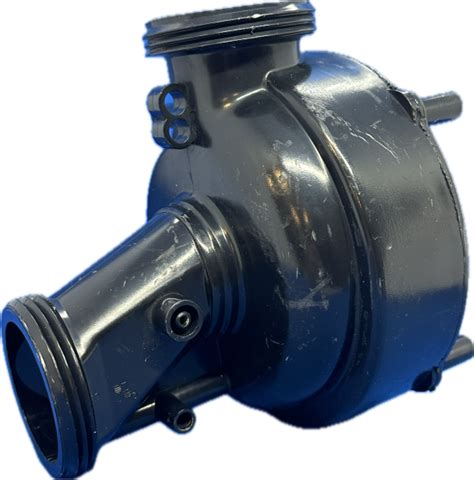Keep Your Hydrabath Running Smoothly: Wet End Pump Test
Maintaining a hydrabath system requires regular upkeep to ensure optimal performance and longevity. One crucial aspect of this maintenance is regularly testing the wet end pump. This seemingly simple component is the heart of your hydrabath's water circulation, and a malfunction can lead to significant issues. This comprehensive guide will walk you through the process of performing a wet end pump test, highlighting potential problems and solutions.
What is a Wet End Pump?
The wet end pump is the part of your hydrabath's circulation system that comes into direct contact with the water. It houses the impeller, which is responsible for pushing water through the system. Understanding its function is vital for troubleshooting problems. A faulty wet end pump can result in poor water circulation, reduced hydromassage effectiveness, and even system failure.
Why Perform a Wet End Pump Test?
Regular testing of your wet end pump is crucial for preventative maintenance. Early detection of problems can save you from costly repairs down the line. A wet end pump test allows you to:
- Identify leaks: A leaking wet end pump can waste water and damage other components.
- Detect impeller damage: A damaged impeller reduces water flow and efficiency.
- Assess overall pump performance: This helps determine if the pump is operating at its peak efficiency.
- Prevent major system failures: Catching small issues early prevents them from escalating into larger, more expensive problems.
How to Perform a Wet End Pump Test: A Step-by-Step Guide
Before you begin, always turn off the power to your hydrabath system. Safety should always be your top priority. The specific steps may vary slightly depending on your hydrabath model, so always consult your owner's manual for detailed instructions. However, these general steps will provide a solid foundation:
- Access the Wet End Pump: Locate the wet end pump. This usually involves accessing the pump compartment, often located beneath the hydrabath or in a nearby utility closet.
- Inspect for Leaks: Carefully examine the pump for any visible signs of leaks. Look for water stains, dripping, or dampness around the pump casing and connections.
- Check the Impeller: If possible, visually inspect the impeller. Look for damage such as cracks, chips, or significant wear. A damaged impeller will not circulate water effectively.
- Test Water Flow: Turn the power back on (after ensuring all connections are secure). Observe the water flow from the jets. Reduced or inconsistent flow is a sign of a problem.
- Listen for Unusual Noises: Pay attention to any unusual noises emanating from the pump, such as grinding, squealing, or humming. These noises often indicate problems with the pump's internal components.
- Check for Vibration: Excessive vibration indicates an imbalance or other mechanical issues within the pump.
Troubleshooting Common Wet End Pump Problems
Several common issues can arise with a wet end pump. Let's explore some and how to address them:
H2: My Hydrabath Jets Have Weak Water Flow. What Could Be Wrong?
Weak water flow is a classic symptom of a failing wet end pump. This could be due to a damaged impeller, clogged intake filters, or air trapped in the system. Check the impeller for damage and clean or replace the filters as needed. If the problem persists, the pump itself may need attention or replacement.
H2: I See Water Leaking Around My Wet End Pump. What Should I Do?
A leaking wet end pump is a serious problem that requires immediate attention. This often points to a worn seal or a crack in the pump casing. In most cases, replacement of the wet end pump is necessary.
H2: My Wet End Pump is Making Strange Noises. Is This Normal?
No, strange noises (grinding, squealing, etc.) from your wet end pump are not normal. These often indicate internal mechanical problems, such as bearing wear or impeller damage. It’s best to address this issue promptly to prevent further damage.
When to Call a Professional
While some minor issues can be addressed through DIY troubleshooting, more complex problems should be handled by a qualified professional. If you are uncomfortable performing the wet end pump test or if you identify a serious problem, contact a licensed plumber or hydrabath technician for assistance.
Maintaining Your Hydrabath's Wet End Pump
Regular maintenance significantly extends the lifespan of your wet end pump and prevents premature failure. This includes:
- Regular Inspections: Visually inspect your wet end pump regularly for any signs of wear or damage.
- Cleaning: Clean the pump and surrounding area to remove debris and mineral buildup.
- Filter Maintenance: Regularly clean or replace filters to prevent clogs that restrict water flow.
By following these guidelines and performing regular wet end pump tests, you can ensure your hydrabath continues to provide years of relaxing therapeutic enjoyment. Remember, preventative maintenance is key to keeping your system running smoothly and saving you money in the long run.

